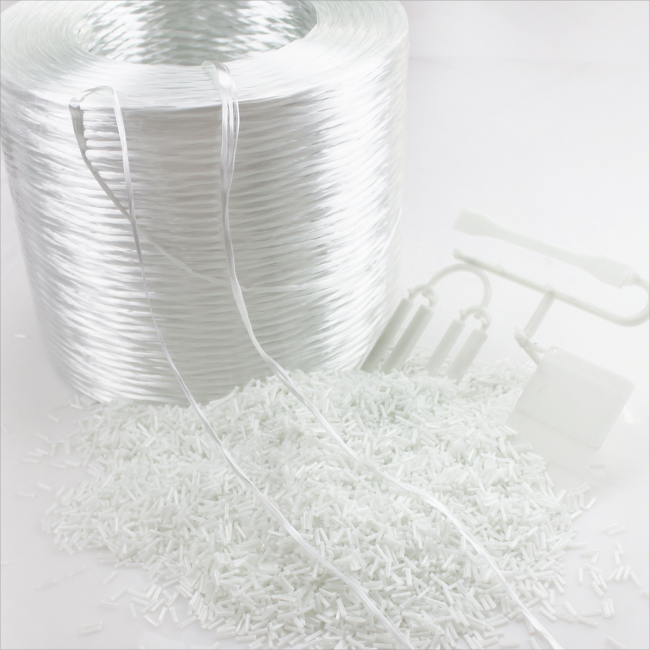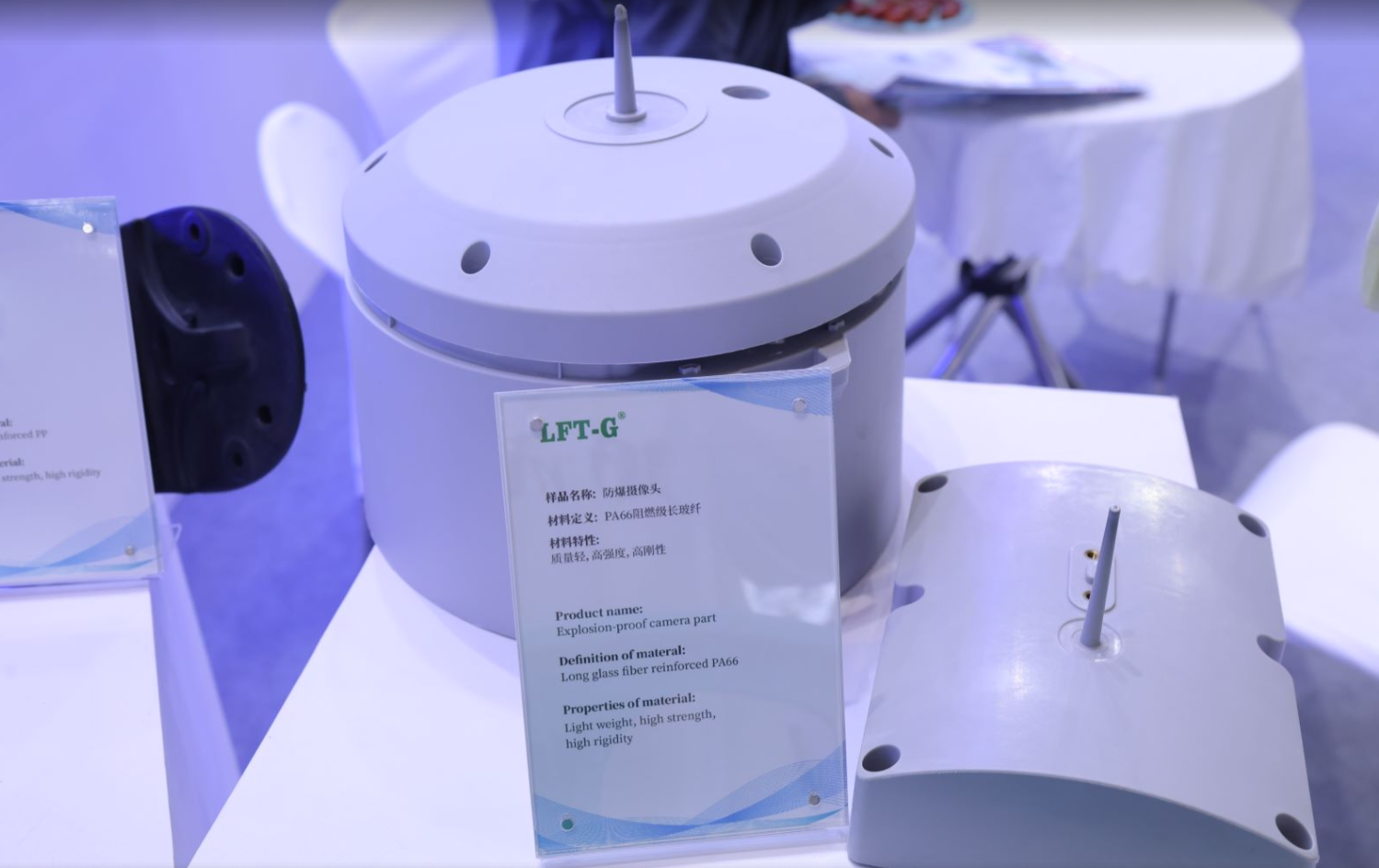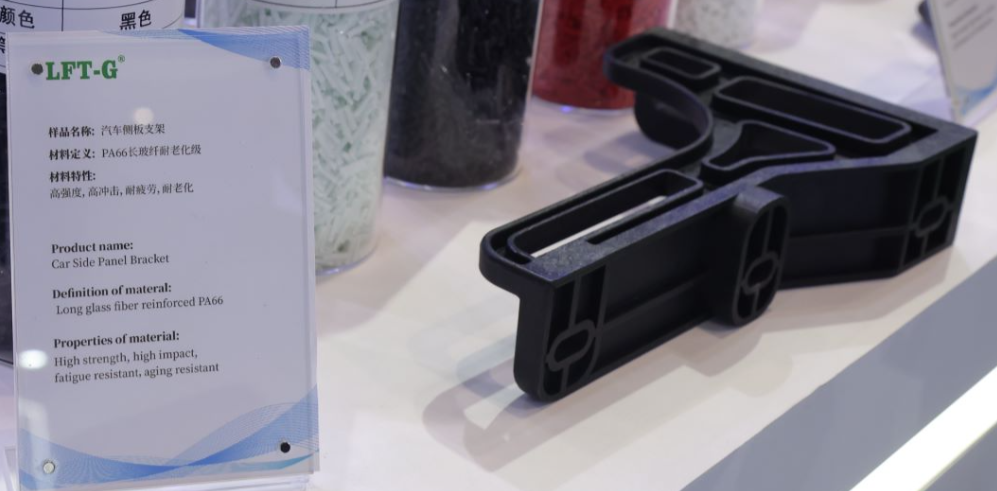nuovo blog

La poliammide è comunemente nota come nylon (PA), la sua caratteristica principale è che la catena principale del polimero contiene un gran numero di gruppi ammidici, questi gruppi ammidici sono facili da formare legami idrogeno tra loro e la forza tra Le catene molecolari PA sono forti. Pertanto, il PA ha le caratteristiche di elevata cristallinità, elevata durezza superficiale, buona stabilità chimica, elevata resistenza alla trazione e alla flessione, resistenza all'usura, resistenza al calore e così via.
Tuttavia, ci sono molti difetti nel PA, tra i quali i principali difetti sono che la temperatura e l'umidità dell'ambiente esterno hanno una grande influenza sulla resistenza agli urti, sulla stabilità dimensionale e sull'assorbimento d'acqua del PA.
I materiali PA puri in molti casi non sono in grado di soddisfare le effettive esigenze di utilizzo. Pertanto, di solito è necessario prendere in considerazione la modifica.
Modifica di materiali PA aggiungendo modificatori inorganici o miscelazione con altri polimeri per preparare leghe per soddisfare i requisiti di elevate prestazioni di elevata resistenza, resistenza all'usura, resistenza alle basse temperature, ecc.
Rispetto ai modificatori organici, i modificatori inorganici hanno maggiore resistenza e stabilità termica, rendendoli i principali modificatori del PA. I modificatori inorganici per la modificazione del PA includono principalmente particelle inorganiche come carbonato di calcio e materiali in fibra come la fibra di vetro (GF).

GF non solo ha un basso costo, ma ha anche un'elevata resistenza alla trazione, un basso allungamento a rottura, un elevato modulo elastico, buone proprietà meccaniche, resistenza al calore e stabilità dimensionale e altre proprietà. Gf è un materiale modificato con polimero comunemente usato con buone proprietà.
Esistono molti studi sulla modificazione del PA da parte del GF. Tuttavia, sono ancora riportate grandi differenze nelle proprietà meccaniche e termiche dei vari compositi PA/GF. Questo perché le proprietà dei compositi PA/GF sono influenzate da molti altri fattori oltre al contenuto di PA e GF.
Ad esempio, la forza dell'interfaccia di GF e PA (trattamento superficiale GF, modifica della matrice PA), il diametro di GF, la combinazione della vite dell'estrusore e l'effetto sinergico di GF e altri riempitivi inorganici.

Parte della fotocamera in LFT-G®ï¸ PA66+GF40
Sulla base dei fattori di cui sopra, in questo documento vengono esaminate le influenze dei compositi PA/GF.
1. L'effetto della forza interfacciale tra matrice PA e GF sulle proprietà dei compositi PA/GF
1) Influenza della modificazione della superficie della fibra di vetro sulle proprietà dei compositi PA/GF
A causa della grande differenza di polarità tra la resina GF e quella PA, la compatibilità tra le due è scarsa e la forza di interfaccia tra le due è debole. Quando sottoposto a forza esterna, è facile che si verifichi la disadesione dell'interfaccia tra GF e PA, il che influisce seriamente sull'effetto di potenziamento di GF su PA.
Pertanto, la modifica organica superficiale del GF viene solitamente effettuata per migliorare la compatibilità tra GF e PA, la forza di interfaccia tra GF e PA e la dispersione di GF nella matrice PA.
L'agente di accoppiamento è un tipo di composto con struttura speciale, che presenta gruppi che possono interagire con materiali inorganici come vetro, cemento, metallo e materiali organici come resina sintetica. Può essere utilizzato per migliorare la compatibilità tra due o più sostanze e ha un'ampia gamma di applicazioni.
L'agente di accoppiamento comunemente utilizzato per la modifica della superficie GF è principalmente l'agente di accoppiamento silano, inoltre, l'agente di accoppiamento titanato viene utilizzato anche per la modifica della superficie GF.
Poiché l'agente di accoppiamento titanato è facile da idrolizzare in acqua, viene generato un gran numero di bolle e il materiale PA assorbe facilmente l'acqua, il che limita l'applicazione dell'agente di accoppiamento titanato per modificare GF nella matrice PA.
*Sun Peng et al. ha studiato l'effetto della concentrazione dell'agente di accoppiamento silano aminopropil trietossisilano (KH550) in soluzione acquosa e la modifica di GF mediante diversi agenti di accoppiamento silano (cianoetil trietossisilano, KH550 e γ-glicidil etere ossipropil trimetossisilano (KH560)) sulle proprietà di PA6/ Compositi GF.
*I risultati mostrano che le proprietà dei compositi PA6/GF modificati con una soluzione acquosa di KH550 all'1,5% sono le migliori. Rispetto a KH550 e KH560, le proprietà dei compositi PA6/GF modificati da cianoetil trietossisilano sono migliori.
*Tuttavia, le proprietà di trazione, flessione e impatto dei compositi PA6/GF modificati da tre agenti di accoppiamento silano sono state migliorate. Questo perché la superficie del GF non trattato è liscia ed è facile estrarla dalla matrice PA6. La forza di interfaccia tra la matrice GF modificata e quella PA6 è elevata e la sezione trasversale di trazione è interlacciata.
Inoltre, il modificatore di superficie GF comunemente utilizzato nell'industria è spesso una miscela di diverse sostanze, chiamata infiltrato. Attualmente, il comune agente infiltrante GF ha molti componenti, tra cui principalmente l'agente filmogeno, l'agente di accoppiamento, il lubrificante, l'agente antistatico, ecc. Tra questi, l'agente filmogeno determina la qualità dell'agente infiltrante che è molto importante.
*Li Cuihong et al. ha sintetizzato un agente filmogeno poliuretanico modificato con resina epossidica per modificare GF e ha preparato compositi PA66/GF. I risultati mostrano che, a causa della presenza del gruppo epossidico, il GF modificato può reagire chimicamente con il gruppo ammidico sulla resina PA66 e la forza di interfaccia tra GF e resina PA è significativamente aumentata, il che migliora le proprietà meccaniche e la resistenza all'idrolisi di PA66/ Composito GF.
*GF è stato modificato dall'agente di accoppiamento silanico e applicato ai compositi PA, ma l'effetto di modifica è stato scarso. Pertanto, negli ultimi anni, i ricercatori hanno modificato GF sintetizzando nuovi agenti di accoppiamento silano o utilizzando altri modificatori di superficie e li hanno applicati alla matrice PA per migliorare ulteriormente la forza di interfaccia tra GF e PA.
*Liu Yuku et al. ha sintetizzato un nuovo agente di accoppiamento silanico (N1-A) utilizzando cianoetil triclorosilano e anidride acetica e lo ha utilizzato per modificare la superficie di GF.
*Diverso dallo studio di Sun Peng et al., rispetto al composito PA modificato KH550, quando il nuovo agente di accoppiamento N1-A rappresenta solo lo 0,5% della soluzione di trattamento del modificatore di superficie, la resistenza alla trazione, la resistenza alla flessione e la flessione i moduli del composito PA6/GF modificato sono significativamente più alti.
*Questo perché N1-A viene idrolizzato in acido acetico e, in condizioni di catalisi acida, si formano ulteriormente gruppi ammidici e gruppi di acido carbossilico e i gruppi ammidici generati formano legami idrogeno con la matrice PA6, mentre i gruppi di acido carbossilico possono reagire chimicamente con legami ammidici nella matrice PA6, migliorando la forza di interfaccia tra matrice PA e GF.
Infatti, nel processo di utilizzo dell'agente di accoppiamento silanico, vengono generati composti volatili di piccole molecole come metanolo ed etanolo, con conseguenti determinati rischi ambientali.
*Basato sul principio bionico dell'adesione dei mitili, Luo Kaiqiang et al. ha rivestito con successo la dopamina sulla superficie di GF mediante metodo di ossidazione/autopolimerizzazione. A causa della presenza di molti gruppi polari sulla superficie della dopamina, si è formata una forte interazione di legami idrogeno tra la matrice GF e PA e si è formata una forte forza interfacciale tra GF e PA.
*I risultati sperimentali mostrano che l'effetto di potenziamento di GF su PA6 è migliore di quello di GF modificato da KH550, e il metodo è ecologico ed economico e il processo di preparazione è semplice.
In sintesi, lo scopo principale degli agenti di accoppiamento o di altri modificatori di superficie è migliorare la forza interfacciale tra la matrice GF e PA. Le proprietà meccaniche e la resistenza all'idrolisi dei compositi PA/GF vengono notevolmente migliorate aumentando la forza interfacciale tra GF e matrice PA.

Pezzo di ricambio in LFT®ï¸ PA66+GF
2) Effetto della modifica della matrice di nylon sulle proprietà dei compositi PA/GF
Oltre alla modifica superficiale del GF, la matrice PA può essere ulteriormente modificata aumentando la forza dell'interfaccia PA/GF. La modifica della matrice PA include principalmente l'aggiunta di compatibilizzanti o altri modificatori alla matrice PA. Questi modificatori possono aumentare la forza di interazione tra la matrice PA e GF e migliorare le proprietà meccaniche dei compositi PA/GF.
*Zhou Lihua et al. ha aggiunto il copolimero etilene-ottene innestato con anidride maleica (POE-g-MAH) nei compositi PA6T/GF come agente indurente per capacità. I risultati mostrano che quando il contenuto di POE-g-MAH è del 5%, la resistenza alla trazione dei compositi PA6T/GF aumenta di circa il 20% e la resistenza alla flessione aumenta del 10%.
Questo perché l'anidride acida sulla catena POE-g-MAH può reagire chimicamente con il gruppo ammidico sulla catena molecolare PA66 e può anche reagire con il gruppo ossidrile sulla superficie di GF, aumentando la forza di interfaccia tra GF e PA66.
La superficie del GF nel composito PA6T/GF/POE-g-MAH con forte forza interfacciale è ruvida, il che indica che il legame tra GF e la resina PA è buono. La superficie GF è liscia e facile da estrarre nella sezione composita con scarsa forza interfacciale.
In sintesi, i compatibilizzanti migliorano le proprietà meccaniche dei compositi aumentando la forza di interazione tra GF e PA.
Oltre ai compatibilizzanti, alcuni modificatori del flusso possono anche migliorare le forze interfacciali tra la matrice PA e GF.
*Dohyun et al. ha preparato tre modificatori di flusso HMDA, DMDA e MCHA utilizzando esandiammina, dodecametilene diammina, 4,4 '-metilene bis (cicloesanammide) e acidi grassi, rispettivamente, per modificare i compositi PA66/GF.
*L'aggiunta del modificatore di flusso non solo migliora la fluidità dei compositi PA66/GF, ma produce anche un legame idrogeno sia con PA66 che con GF grazie alla presenza del legame ammidico nella catena principale del modificatore di flusso, che aumenta l'interfaccia forza tra GF e matrice PA66 e migliora la dispersione di GF nella matrice PA66. La resistenza alla trazione e il modulo di flessione dei compositi PA66/GF sono migliorati.
In sintesi, la forza di interazione tra GF e matrice PA può essere migliorata modificando sia la superficie GF che la matrice PA, migliorando così la dispersione di GF nella matrice PA e migliorando le proprietà meccaniche dei compositi PA/GF.
2. L'influenza del diametro GF sulle proprietà dei compositi PA/GF
Oltre alla forza interfacciale tra la matrice PA e GF, anche le proprietà del GF sono un fattore importante che determina le proprietà dei compositi PA/GF. Ad esempio, il diametro di GF, come dimensioni, resistenza, modulo e altre proprietà meccaniche. Al momento, la differenza tra la resistenza e il modulo del GF sul mercato è piccola e il diametro del GF è ampio. È stato dimostrato che il diametro del GF ha una grande influenza sulle proprietà dei compositi PA/GF.
*Le aree di contatto tra GF e resina PA66 con diametri diversi (15, 13, 11 e 10μm) sono state teoricamente calcolate da Zhijian Zhang et al. I risultati mostrano che il rapporto dell'area di contatto tra GF e resina matrice PA66 è 1:1,1 × 1,3 × 1,5.
*I risultati sperimentali mostrano che la resistenza alla trazione e la resistenza all'urto dei compositi PA66/GF aumentano con l'aumento dell'area di contatto tra GF e matrice. Questo perché maggiore è l'area di contatto tra la resina GF e PA, maggiore è la forza interfacciale tra di loro. Inoltre, con l'aumento del diametro del GF, la superficie del GF diventa più liscia e il "grado di cerniera" con la resina diminuisce.
*Tang Youqian et al. hanno studiato le differenze prestazionali dei compositi PA6/30%GF con diversi diametri GF e i risultati sono mostrati nella Tabella 1. Come si può vedere dalla Tabella 1, minore è il diametro di GF, maggiore è la resistenza alla trazione, alla flessione, alla flessione modulo e resistenza all'urto del materiale, e maggiore è la velocità di fusione. Tuttavia, quando il diametro del GF è inferiore a 10μm, il suo prezzo aumenta notevolmente, il rapporto costi-prestazioni è basso e il valore d'uso effettivo è basso.
3. L'influenza della combinazione delle viti sulle prestazioni dei compositi PA/GF
Oltre ai componenti compositi PA/GF sopra menzionati, anche la tecnologia di lavorazione è uno dei fattori che determinano le prestazioni dei compositi PA/GF. Tra questi, la combinazione di viti per la preparazione dell'estrusore composito PA/GF è la più influente.
Questo perché la combinazione delle viti determina in gran parte la lunghezza e la dispersione del GF nella matrice PA. I risultati mostrano che quando la lunghezza del GF nella matrice PA varia da 300 a 400μm, l'effetto di rafforzamento e indurimento del GF sulla matrice PA è migliore e l'effetto di rafforzamento e indurimento del GF troppo lungo o troppo corto sulla matrice PA è scarso.
Ciò accade perché un GF troppo corto è difficile da penetrare nella matrice, mentre un GF troppo lungo è difficile da disperdere uniformemente nella matrice PA. A seconda dell'azione della vite, la forza di taglio della vite ha una grande influenza sulla lunghezza del GF. La combinazione a vite del polimero rinforzato GF è costituita da una sezione di alimentazione, una sezione di fusione, una seconda sezione di alimentazione, una sezione di miscelazione e una sezione di scarico, in cui la lunghezza del GF è principalmente influenzata dalla sezione di miscelazione.
Per ottenere la lunghezza appropriata del GF e la sua buona dispersione nella matrice PA, la capacità di taglio della vite può essere regolata aumentando o riducendo il numero di blocchi di rete e regolando la posizione dei blocchi di rete nella vite. Il metodo specifico di combinazione della vite deve essere determinato in base al numero di modello dell'estrusore, al rapporto lunghezza-diametro della vite e ad altri fattori.
Oltre ai blocchi di mesh, elementi filettati di forma speciale, come piastre dentate e piastre dentate inverse, sono efficaci nella preparazione di compositi PA/GF. L'elemento del disco dell'ingranaggio può migliorare la dispersione del GF e ridurne l'usura sul GF.
Tra questi, a causa dell'apertura del bordo a spirale dell'elemento del disco dentato SME, la sua capacità di trasporto e capacità di decompressione viene ridotta e il grado di riempimento del materiale nella scanalatura a spirale aumenta, il che prolunga il tempo di permanenza di il materiale. Pertanto, l'elemento della piastra dentata viene utilizzato nella combinazione della vite e la resistenza alla trazione, alla flessione e alla resistenza agli urti del composito PA66/GF sono significativamente migliorate.
*Chen Baiquan et al. ha progettato tre combinazioni di viti per la sezione di miscelazione dell'estrusore per preparare compositi PA6 con elevato riempimento di GF.
I risultati mostrano che utilizzando 1 set di blocchi a maglia spessa e 1 set di elementi di miscela di denti SME e aggiungendo 2 set di combinazioni di viti a blocco a maglia sottile, combinati con l'aggiunta del secondo lato di alimentazione GF, l'uniformità della dispersione di GF in il materiale composito PA6/GF preparato è migliore e la lunghezza è compresa tra 300 e 500μm. Le proprietà meccaniche dei compositi PA6/GF sono notevolmente migliorate.
*Jiang Zhaoyin et al. ha applicato la placca a denti inversi alla preparazione della vite composita PA66/GF e ha progettato una varietà di combinazioni di viti.
La ricerca mostra che rispetto al blocco a rete, la piastra a denti inversi può non solo miscelare PA66 e GF in modo uniforme, migliorare l'efficienza di trasporto, ma anche ridurre adeguatamente la resistenza al taglio della vite, ridurre il grado di usura del GF sotto fuso taglio, garantire la lunghezza e l'integrità del GF, ridurre i difetti del materiale composito PA66/GF e migliorare le proprietà meccaniche del materiale composito.
Lo stato della ricerca di cui sopra mostra che i compositi PA/GF con prestazioni migliori possono essere ottenuti utilizzando la combinazione a vite di elementi di blocco mesh, placca dentata e placca dentata inversa. Allo stesso tempo, la combinazione della vite è strettamente correlata alla posizione di alimentazione di GF e le posizioni relative del blocco di accoppiamento, della piastra dentata e degli elementi della piastra dentata inversa devono essere regolate in base alla modalità di alimentazione di GF per ottenere la migliore vite taglio.
4. L'effetto dell'effetto sinergico di GF e altri riempitivi inorganici sulle proprietà dei compositi PA
Il GF svolge un ruolo ovvio nel migliorare le proprietà meccaniche del PA, ma rende anche la matrice PA fragile e il campione apparentemente cattivo.
Le nanoparticelle inorganiche hanno un'ampia area superficiale specifica e molti siti attivi sulla superficie e possono essere modificate da vari tipi di tensioattivi per migliorare la loro compatibilità con i materiali PA. Ad esempio, le nanoparticelle inorganiche modificate possono reagire chimicamente con i gruppi ammidici dei materiali PA per produrre una buona forza interfacciale, che è molto maggiore della forza di van der Waals.
Allo stesso tempo, i riempitivi inorganici hanno varie forme, come granulari, a scaglie, fibrosi, ecc., e diverse forme di riempitivi inorganici hanno effetti di modifica diversi. Pertanto, i riempitivi inorganici possono migliorare i difetti prestazionali dei compositi PA/GF e la modifica sinergica del PA mediante riempitivi inorganici e GF può migliorare ulteriormente le prestazioni dei compositi PA/GF.
Nei compositi PA/GF, i riempitivi inorganici in scaglie, tra cui polvere di talco e montmorillonite, sono ampiamente utilizzati.
*Yang Zhen et al. ha studiato l'effetto del rapporto tra talco e GF sulle proprietà meccaniche del composito PA66.
*I risultati mostrano che rispetto a PA66 puro, PA66/30% talco in polvere e PA66/30%GF, la resistenza alla trazione, alla flessione e all'impatto dei compositi è significativamente migliorata quando il rapporto in massa di PA66/Talco/GF è 70/5 /25.
Ciò è dovuto al fatto che talco e GF sono uniformemente dispersi nella matrice PA66. Quando il materiale è sottoposto a stress, la concentrazione di stress delle particelle di talco porta alla deformazione della matrice PA e alla formazione di linee d'argento, che assorbono una grande quantità di lavoro di deformazione.
Inoltre, l'orientamento multiassiale del GF lungo il talco lamellare rende il GF “scheletro” in grado di sopportare maggiori sollecitazioni. GF e talco sfruttano appieno i rispettivi vantaggi. Pertanto, l'effetto di potenziamento sinergico del GF e del riempitivo inorganico sulla matrice PA può essere realizzato aggiungendoli in modo appropriato. Questo fenomeno è stato verificato anche nello studio sulla preparazione di materiali compositi espansi PA6/GF/talco condotto da Shen Chao et al.
Allo stesso tempo, il talco ha un effetto lubrificante, può ridurre il fenomeno delle fibre fluttuanti dei materiali compositi e inibire la deformazione dei campioni iniettati. Quando il rapporto in massa di PA66/GF/talco è 70/10/20, le proprietà apparenti del composito risultano significativamente migliorate.
*Inoltre, Hu Jin et al. ha utilizzato la montmorillonite organica (OMMT) per co-modificare PA66 con GF. I risultati mostrano che quando il rapporto di massa di PA66/GF/MMT è 100/25/7, la resistenza alla trazione, alla flessione e alla resistenza all'impatto dei compositi PA66/GF/OMMT raggiungono il valore massimo, che è migliore di quello dei compositi PA66 con l'aggiunta di GF o OMMT da soli.
*Ciò è dovuto al fatto che lo strato OMMT viene rimosso e disperso uniformemente nella matrice PA66 e l'OMMT agisce come agente nucleante nella matrice PA66, migliorando la cristallinità del PA66 e quindi la resistenza del composito .
Oltre ai riempitivi inorganici a scaglie, alcuni studi hanno utilizzato riempitivi inorganici aciculari e GF per co-modificare il PA.
*Ma e i suoi colleghi hanno preparato compositi PA6/GF/wollastonite mediante miscelazione allo stato fuso, che ha migliorato la resistenza alla trazione e alla flessione dei compositi, oltre a migliorare le proprietà superficiali del PA6 rinforzato con GF.
*GF può migliorare significativamente PA6, mentre la wollastonite può ridurre la contrazione del composito. Quando la quantità totale di wollastonite e GF è del 30% (il rapporto in massa tra wollastonite e GF è 1–2), le proprietà meccaniche e le proprietà superficiali del materiale sono migliori.
Tutti gli studi di cui sopra mostrano che il composito PA/GF può essere modificato con riempitivi inorganici a scaglie o aciculari e GF, che possono conferire migliori proprietà meccaniche e apparenti dei compositi PA/GF. Pertanto, la modifica sinergica del PA mediante riempitivi inorganici e GF è diventata un'importante direzione di ricerca per i compositi PA/GF.
5. Conclusione
In sintesi, la letteratura esistente mostra che la forza di interfaccia tra GF e PA può essere migliorata mediante la modifica della superficie del GF e della matrice PA, la dispersione del GF nella matrice PA può essere migliorata e le proprietà meccaniche e la resistenza all'idrolisi dei compositi PA/GF può essere migliorato. Minore è il diametro del GF, migliori sono le proprietà meccaniche dei compositi PA/GF, ma minore è il diametro del GF, maggiore è.
Le proprietà meccaniche dei compositi PA/GF possono essere significativamente migliorate mediante l'uso razionale del disco a forma di dente o del disco a forma di dente inverso e del blocco di ingranamento. Le proprietà meccaniche del composito PA modificato da altri riempitivi inorganici e GF sono migliori di quelle modificate dal solo GF. Inoltre, altri riempitivi inorganici possono migliorare il fenomeno delle fibre galleggianti del GF nella matrice PA e ottenere proprietà apparenti più eccellenti.
Al momento, le principali direzioni di ricerca dei compositi PA modificati con GF sono il rafforzamento, l'indurimento, la resistenza al calore, la stabilità dimensionale, ecc. In futuro, le direzioni di ricerca dei compositi in nylon modificato con GF sono le seguenti:
(1) Ottimizzare i modificatori di superficie GF, concentrarsi sullo sviluppo di modificatori di superficie nuovi ed efficienti, migliorare ulteriormente la forza interfacciale tra matrice e GF, migliorare la dispersione di GF nella matrice PA e ottenere compositi PA/GF con caratteristiche meccaniche e termiche più elevate proprietà.
(2) Cercare migliori fluidificanti per migliorare la fluidità di lavorazione dei compositi PA/GF e ridurre la degradazione della matrice PA durante la lavorazione.
(3) Ottimizzare la modifica sinergica del PA da parte di altri riempitivi inorganici e GF, chiarire il meccanismo sinergico di GF e riempitivi inorganici, migliorare le prestazioni dei compositi PA/GF ed espandere la gamma di applicazioni dei compositi PA/GF.